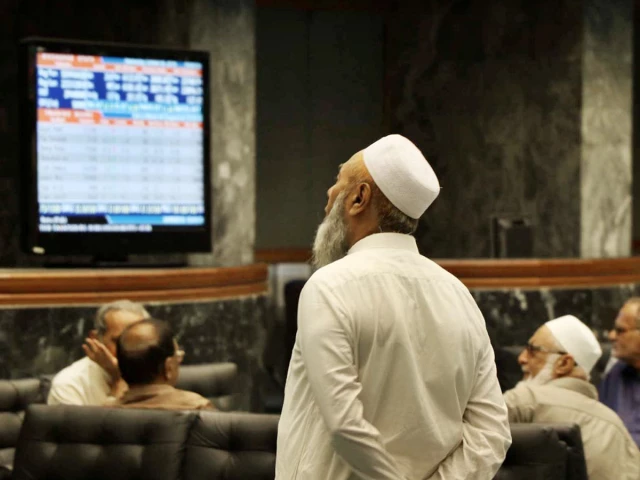Business
Here’s how much weight loss drugs could cost you under Trump’s deals with Eli Lilly, Novo Nordisk

Wegovy injection pens arranged in Waterbury, Vermont, US, on Monday, April 28, 2025.
Shelby Knowles | Bloomberg | Getty Images
President Donald Trump on Thursday struck landmark deals with Eli Lilly and Novo Nordisk to slash the prices of their blockbuster weight loss drugs.
Under the agreements, the monthly out-of-pocket cost of popular injections and upcoming pills could range from $50 to $350 starting next year, depending on the dosage and insurance coverage a patient has, Trump administration officials said.
Existing GLP-1s, including Eli Lilly’s obesity injection Zepbound and Novo Nordisk’s competitor Wegovy, carry list prices above $1,000 a month, which has prevented many patients from taking them. Both companies have introduced lower cost options for people paying in cash and purchasing the drugs directly through their websites.
But the deals with Trump, as part of his “most favored nation” policy, take those efforts to expand access even further. Here’s how much weight loss drugs could cost for patients under the new agreements, based on the details shared so far.
Medicare
Medicare has covered GLP-1 drugs for diabetes and some other medical conditions: for example, Wegovy for slashing cardiovascular risks. But under the new deals, Medicare will start covering the drugs for obesity for the first time starting in mid-2026, which could allow more seniors to qualify for them and spur more private insurers to cover them.
Certain Medicare patients will pay a copay of $50 per month for all approved uses of GLP-1 drugs, including diabetes and obesity treatment.
But the Trump administration is putting some constraints on which Medicare beneficiaries will be eligible to receive GLP-1s for obesity and cardiovascular and metabolic benefits.
Patients are eligible if they fall into these three cohorts:
- The first includes those who are overweight — with a body mass index greater than 27 — or with prediabetes or established cardiovascular disease.
- The second group is people with obesity – with a BMI greater than 30 – and uncontrolled hypertension, kidney disease or heart failure.
- The third group is patients with severe obesity, or anyone with a BMI greater than 35.
Eli Lilly and Novo Nordisk voluntarily agreed to reduce the prices the government pays for existing GLP-1 drugs already approved for diabetes and other uses to $245 a month, across all non-starting doses. Savings generated by those price reductions will allow Medicare to start paying that same price point for GLP-1s for patients with obesity and a high metabolic or cardiovascular risk.
Direct-to-consumer
The agreement will also allow patients to get GLP-1s on direct-to-consumer platforms at steeper discounts than they already receive through drugmakers’ existing sites.
On TrumpRx – the government’s direct-to-consumer platform for buying prescription drugs with cash expected to launch next year – the average monthly cost for Wegovy, Zepbound and other injectable GLP-1s will start at $350 and drop to $250 within the next two years, according to senior administration officials.
Starting doses of upcoming obesity pills from Eli Lilly and Novo Nordisk, pending approvals, will be $149 per month on TrumpRx, Medicare and Medicaid. Under the deals announced Thursday, Eli Lilly will get fast-track reviews of its forthcoming pill.
Eli Lilly on Thursday said it would lower prices by $50 on its own direct-to-consumer platform, LillyDirect, which already offers Zepbound and other drugs at a discount to cash-paying patients. The multidose pen of Zepbound will be available for $299 per month at the lowest dose, with additional doses being priced up to $449 per month.
Eli Lilly’s pill, once approved, will be available at the lowest dose starting at $149 per month
Medicaid
State Medicaid coverage of GLP-1 drugs for obesity is spotty.
But Novo Nordisk and Eli Lilly agreed to extend lower government pricing for their GLP-1 drugs – $245 per month across all other non-starting doses – to all 50 Medicaid programs for all covered uses.
States will have to opt into those prices, meaning some may not. Check with your state government about coverage.
Business
Navi Mumbai airport opens today with 30 domestic flights – The Times of India

MUMBAI: Navi Mumbai International Airport (NMIA) opens to commercial operations on Thursday after years of missed deadlines, opening a second gateway for air travel in the Mumbai region. The day will see four airlines operating about 30 domestic flights at India’s newest greenfield airport. The first scheduled arrival will be an IndiGo flight from Bengaluru, touching down at 8 am, while the first departure will also be operated by IndiGo, a morning service from Navi Mumbai to Hyderabad, scheduled to take off at 8.40 am. The terminal building will open to departure passengers around 6.40 am, said an NMIA spokesperson.“On Day One, domestic services will be operated by IndiGo, Air India Express, Akasa Air and Star Air connecting NMIA to nine destinations across India. The airport will handle 15 scheduled departures on the first day,” said an NMIA spokesperson.“During the initial phase, NMIA will operate between 8 am and 8 pm, with up to 24 scheduled daily departures to 13 destinations and the capability to manage up to 10 aircraft movements per hour. From Feb 2026, operations are planned to progressively scale up to round-the-clock services,” the spokesperson added. “Passenger services from day one will be supported by Digi Yatra-enabled contactless processing at designated touchpoints, along with trained terminal staff across kerbside, check-in, security and boarding areas,” the spokesperson said. Conventional check-in counters too will be available for passengers not opting for Digiyatra. Retail and food and beverage offerings have been curated with a focus on affordability and local preferences, the airport said.In its initial phase, NMIA opens with terminal 1 and one operational runway; the terminal building has a capacity to handle 20 million passengers annually, but it is expected to touch that number before mid-2026. The terminal building can accommodate about 2-3 million passengers beyond its declared capacity. The new airport is 45-50 km from North Mumbai, 35-40 km from South Mumbai and 35-45 km from the eastern suburbs.
Business
Logistics IPO: Yatayat Corporation files Sebi papers to raise funds; growth surge puts road freight firm in focus – The Times of India

Logistics and transportation services provider Yatayat Corporation India Ltd has filed draft papers with markets regulator Sebi to raise funds through an initial public offering, as the road freight segment continues to see strong demand, PTI reported.According to the draft red herring prospectus (DRHP), the proposed IPO will comprise a fresh issue of up to 77 lakh equity shares along with an offer for sale (OFS) of up to 56 lakh equity shares by a promoter, taking the total offer size to as many as 1.33 crore shares.The company said proceeds from the fresh issue will be used primarily to meet working capital requirements and for general corporate purposes.Yatayat Corporation operates in the road logistics space, with a focus on Full Truck Load (FTL) transportation, offering point-to-point freight movement across major logistics corridors in the country. Its operations are supported by a network of 34 branches and one warehouse spread across 12 states.The company services a diversified client base spanning agriculture and agri-inputs, building materials and construction, chemicals and allied industries, energy and power, engineering and industrial manufacturing, IT and technology solutions, metals and mining, textiles and apparel, as well as other industrial and consumer segments.On the financial front, Yatayat Corporation reported revenue from operations of Rs 448.13 crore in FY25, up from Rs 348.34 crore in FY24. Profit after tax rose to Rs 30 crore in FY25, compared with Rs 15 crore in the previous financial year.Unistone Capital has been appointed as the sole book-running lead manager to the issue, the draft papers showed.
Business
WH Smith to claw back £1.5m from ex-bosses after accounting scandal

WH Smith is to claw back around £1.5 million in overpaid bonuses from former bosses following an accounting blunder at the retail firm’s US arm.
The travel retail specialist confirmed last week it is being investigated by the UK’s financial watchdog after it overstated profits for its North American business by as much as £50 million due to issues with its audit process.
Carl Cowling resigned as WH Smith’s chief executive last month after a report by Deloitte confirmed the accounting problems.
The company said on Wednesday in its annual report that annual bonus payments for Mr Cowling and former finance chief Robert Moorhead have been recalculated for 2023 and 2024.
It has also recalculated the payment of long-term share bonuses from a 2021 scheme for executives.
WH Smith said it overpaid Mr Cowling £516,000 in cash and 60,182 deferred shares worth £374,933 based on the latest closing price for the firm.
It overpaid Mr Moorhead by £372,000 in cash and £272,493 worth of shares.
It said it would now seek to “claw back” both of these payments from the former bosses.
WH Smith also confirmed that it did not pay annual or long-term bonuses to Mr Cowling for the past financial year.
As a result, his total pay deal tumbled to £724,000 for the year to August 2025, from £2.71 million for the same period a year earlier.
The retailer told investors last week that it had kickstarted a remediation plan, which aims to strengthen its governance and controls, ensure processes are aligned across the group, and enact cultural change involving training and monitoring.
Its board is currently searching for a permanent group chief executive.
WH Smith is now focused solely on its 1,300 shops in global travel locations, including at airports and train stations, after selling its high street chain of about 480 shops to Hobbycraft owner Modella Capital in June.
As part of the deal, the WH Smith name is disappearing from British high streets and being replaced by brand TGJones.
The slimmed-down business reported a pre-tax profit of £108 million for the year to the end of August, excluding what it deems one-off costs.
-

 Fashion7 days ago
Fashion7 days agoIndonesia’s thrift surge fuels waste and textile industry woes
-

 Tech7 days ago
Tech7 days agoT-Mobile Business Internet and Phone Deals
-

 Business7 days ago
Business7 days agoBP names new boss as current CEO leaves after less than two years
-

 Sports7 days ago
Sports7 days agoPKF summons meeting after Pakistani player represents India in kabaddi tournament
-

 Entertainment7 days ago
Entertainment7 days agoIndia streamlines visa rules in boost for Chinese professionals
-

 Sports7 days ago
Sports7 days agoUWCL grades for all 18 teams: Leuven get A+; Barça an A-, PSG fail
-
Sports4 days ago
Alabama turned Oklahoma’s College Football Playoff dream into a nightmare
-

 Entertainment7 days ago
Entertainment7 days agoRadiation fears rise after cracks found in $2 billion Chernobyl shield












